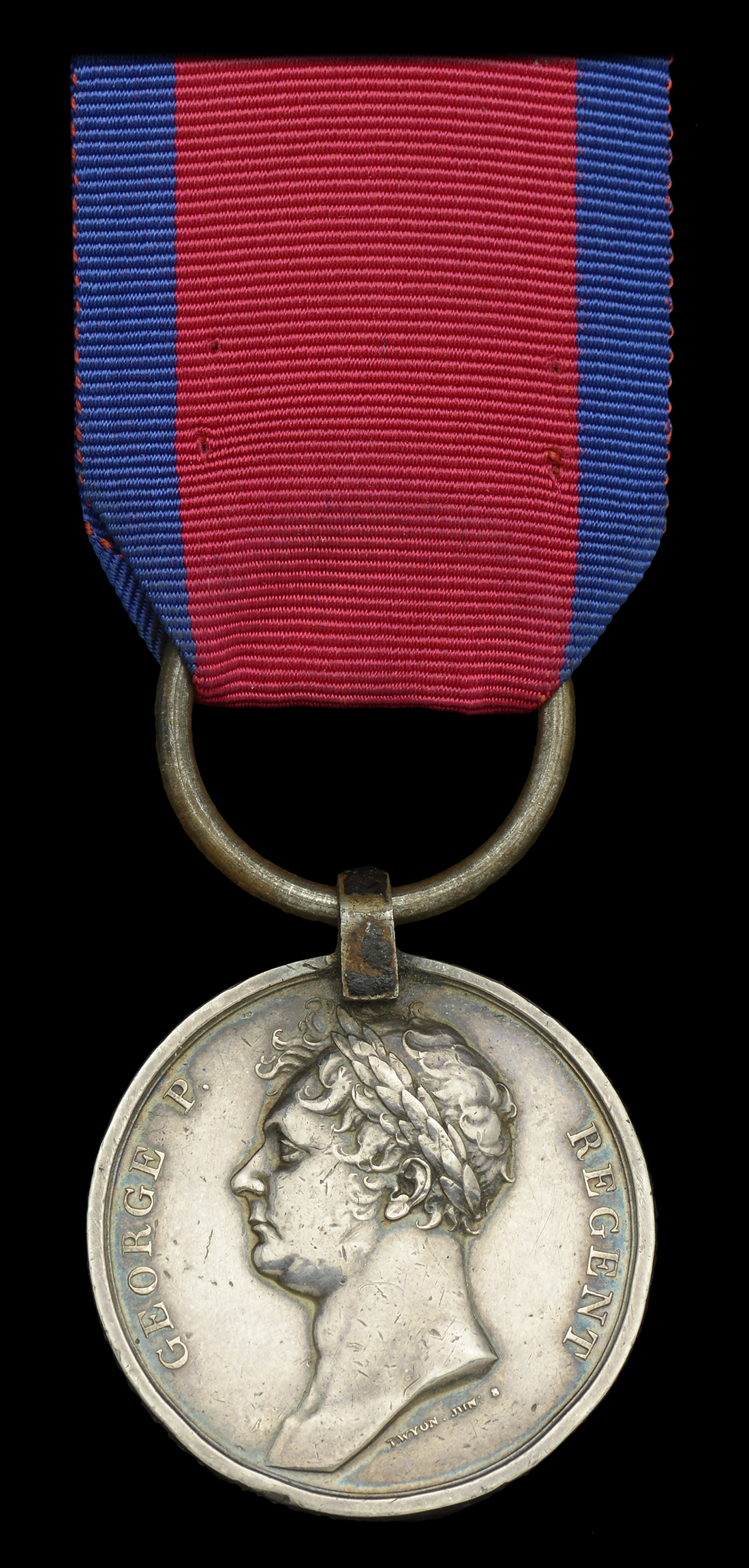The scarce ‘Union Brigade’ Waterloo medal awarded to Lieutenant Samuel Black, 6th or Inniskilling Dragoons Waterloo 1815 (Lieut. Samuel Black, 6th or Inniskilling Drag.) fitted with steel clip and replacement ring suspension, together with old gilt metal name plate inscribed ‘Lieut. Samuel Black 6th, or Inniskilling Dragoons’, edge bruising, otherwise nearly very fine £5,000-£7,000 --- On April 9th, 1815, the 6th or Inniskilling Dragoons assembled from its various quarters at Northampton under orders for active service, and three squadrons of two troops each were organised under Captain Madox, Captain Brown, and Br. Lieut-Colonel Miller, who commanded the right, centre, and left squadrons respectively. At Waterloo the regiment, under the command of Colonel Joseph Muter, was formed into a brigade with the Royal Dragoons and the Scots Greys, and became known as the 'Union Brigade.' With their immortal charge against the French, the Union Brigade delivered perhaps the most decisive cavalry charge ever made in the annals of modern warfare. In just a few minutes Napoleon lost 5000 men, and nearly all the guns belonging to the attack were put out of action for the remainder of the day. In a letter dated Brussels, 21st June, 1815, Muter gave his own account of events at Waterloo, extracts of which were published in a Scotch newspaper shortly afterwards: ‘Hostilities commenced on the 16th, by an attack on the Prussian advanced posts. Our army was put immediately in motion, and after two affairs, we retired to our position 14 or 15 miles from hence, and covering the great road to this place. Our right rested on a hill, our centre on another more advanced, forming part of the circumference of a circle; the left I did not see. The attack commenced on the right, but was soon transferred with great fury to the centre. The enemy attacked in three solid columns of immense depth, supported by cavalry and artillery. Our infantry received them in line: behind the infantry, was Gen. Ponsonby’s Brigade of Cavalry, consisting of the 1st Dragoons, the Greys, and Inniskillings:- when the infantry had given their fire, we charged through intervals, which the infantry made for us, in open column of half squadrons, and completely upset the enemy’s three massy columns, not leaving a man. Gen. Ponsonby and Col. Hamilton of the Greys being killed, the command of the brigade devolved upon me:- nothing could be finer than their conduct, or more successful. Our strength before the action was 1050; after it, about 100; “but many had been sent to escort prisoners”. In killed, wounded, &c., we lost about two thirds. The enemy reiterated his attacks on the centre with fresh troops, but without success. He then made a most desperate attack on the right, where my small brigade of 100 men was called to charge about 400 cavalry, supported by artillery and squares of infantry. I was told that everything depended on our exertions - it was in leading my miserable remains, that I received my wound. The charge was not successful, indeed almost every man and horse was knocked down. Such butchery was never beheld - the day was long doubtful, but the fortunate arrival of the Prussians decided it.’ Samuel Black was the younger son of Colonel Samuel Black, 3rd Bengal Native Cavalry (d. 1799), by Margaret, eldest daughter of Major Jerome Noble, 18th Royal Irish Regiment of Foot. He joined the 6th Dragoons as a Cornet on 5 April 1810; Lieutenant, 8 July 1813; Captain, 28 July 1825; half-pay, 8 April 1826. He died with the rank of Major on 2 November 1853.





